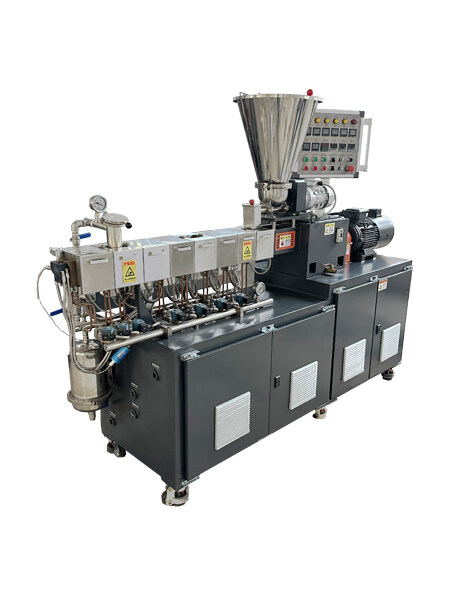Email cannot be empty
Password cannot be empty
Email format error
Email cannot be empty
Email already exists
6-20 characters(letters plus numbers only)
The password is inconsistent
Email format error
Email cannot be empty
Email does not exist
6-20 characters(letters plus numbers only)
The password is inconsistent


As the demand for high-performance twin-screw extruders continues to rise, manufacturers are constantly seeking ways to optimize production efficiency and improve product quality. In modern production processes, twin-screw extruders not only perform feeding and plasticizing tasks but are also expected to handle processes like dewatering and drying. To meet the diverse needs of customers, these machines must continuously evolve. So, how can twin-screw extruder manufacturers enhance their performance and deliver higher-quality products?
One of the key goals in the development of the new co-rotating twin-screw extruders is increasing production efficiency. This can be achieved by raising the screw speed and enhancing plasticizing and mixing levels. For instance, increasing the depth of the screw grooves at the same rotational speed significantly boosts throughput. However, this also requires the screw to handle higher torque and maintain consistent plasticization and mixing.
At high screw speeds, the material’s residence time in the extruder decreases, which can lead to insufficient plasticization and mixing. To counter this, extending the screw length becomes essential. This, in turn, increases the torque and power demands on the extruder.
Expanding the free volume in the screw channels is another crucial factor. In the feeding and devolatilization zones, having screw elements with large free volumes is necessary. For materials with low bulk density, increasing the free volume in the feeding section and improving the fill ratio of material in the screw can greatly enhance the extruder’s processing capacity.
To further increase torque and speed, the design of the gear distribution box must be carefully refined. High torque requirements demand higher precision in the design and manufacturing of gearbox components like gears, output shafts, and bearings. Additionally, core parts such as the screw shaft, screw elements, and kneading discs also need to be designed and manufactured with higher precision and strength.
For twin-screw extruders to produce high-quality products, the design of the plasticizing system is critical. This system, composed mainly of the screw and barrel, is typically modular to meet the demands of various processing applications. The screw can be divided into several sections: the feeding section, plasticizing section, mixing section, degassing section, and extrusion section. Each section performs a distinct function during extrusion, and the geometric parameters of the screw elements must be tailored accordingly.
For co-rotating twin-screw extruders, the relationship between key design elements—such as the center distance between the screws, the number of screw flights, and the thread angles—must be carefully calculated to avoid interference between the two screws. Advanced computer-aided design (CAD) software is often used to model the screws in 3D, ensuring the precise geometry of self-wiping screw elements and checking for proper screw engagement.
By applying these advanced design techniques, twin-screw extruders can minimize dead zones in the screw’s operation, ensuring that materials are processed evenly. This reduces the risk of material degradation due to prolonged residence times, which is essential for producing high-end, premium plastic products.